

33 12 37 44 Support Women In STEM To Have Healthy Career Growth Vasanthi Ramesh, NetApp India How To Address Gender Imbalance In The Workplace - Rashim Mogha, Skillsoft How Employee Upskilling And Reskilling Can Benefit Your Organization - Sumit Sabharwal, Fujitsu The Role Of Empathy And Coordination In Healthy Workplace Competition - Gaurav Bhagat, Gaurav Bhagat Academy (GBA) NOVEMBER 2022 • Vol.2 • No. 11 EMERGInG HR TREndS FOR 2023 - Dr. Sameer Pingle, Associate Dean, School of Business Management, SVKM's NMIMS, Indore (ISSN 2564-2049)


07 On the Cover I nd EX HCM Excellence (APAC & Middle East) NOVEMBER 2022 Vol.02 No.11 (ISSN 2564-2049) Emerging HR Trends For 2023 Talent management to employee wellness and compensation, everything is set to change - Dr. Sameer Pingle, School of Business Management, SVKM's NMIMS, Indore Articles 35 Providing Mentorship Programs To Women In Tech Should Be Every Organization’s Priority Mentorship sessions also are beneficial for mentors - Aliona Geckler, SVP, Business Operations, Acronis 39 PoSH: How Safe Are Your Employees? HR’s role in building a culture of inclusion - Smita Shetty Kapoor, CEO & Co-Founder, KelpHR 47 What Makes A Top Supply Chain Talent? Three hard skills, three soft skills, and one fundamental skill - Radu Palamariu, Managing Director, Asia Pacific and Europe, Alcott Global 09 ‘HR’s Biggest Challenge Will Be Talent Retention’ Exclusive interview with Prashant Mahagaonkar, Talent Manager, Vahak 14 Talent Acquisition: Challenges, Opportunities And The Future Highlights from #TASCON22 - Excellence ePublications Team 30 Exclusive Interview With Jeyamalini Natesan, Head, HR & OHS, Huhtamaki India Straight Talk with HR.com CHRO Corner
Support Women In STEM To Have Healthy Career Growth
How to address the lagging numbers of women IT leaders
- Vasanthi Ramesh, VP, Engineering for Manageability and Data Protection, NetApp India
The Role Of Empathy And Coordination In Healthy Workplace Competition
Healthy competition between employees can motivate them and encourage them to put in more effort

- Gaurav Bhagat, Founder, Gaurav Bhagat Academy (GBA)
How To Address Gender Imbalance In The Workplace

Organizations can advance women’s professional journeys by taking positive action in the workplace
- Rashim Mogha, General Manager, L&B Portfolio, Skillsoft


12 33 37 44
How Employee Upskilling And Reskilling Can Benefit Your Organization
Helping employees reskill or upskill is the way forward for new-age organizations
- Sumit Sabharwal, VP-HR, Fujitsu Global Delivery Centers
INDEX
TOP PICKS
Driving and inspiring HR Excellence in the Asia Pacific and the Middle East regions.
HCM Excellence (APAC & Middle East) - Bi-monthly Interactive Learning Journal
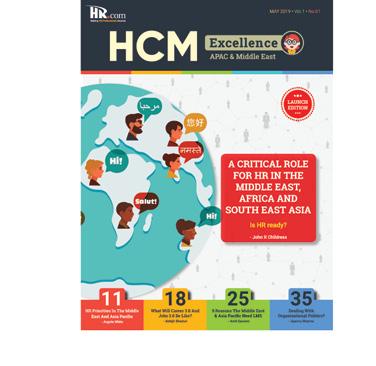
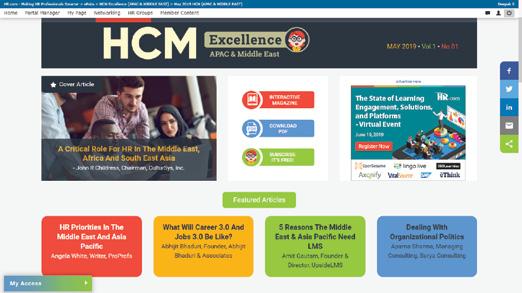
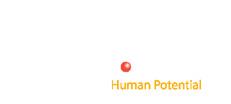
Stay up to date on labor laws and compliant on HCM regulations in the Asia Pacific (APAC) and Middle East regions. This bimonthly publication offers relevant topics that help educate and inform readers on the latest HR developments, regulations, or practices in these areas that may affect your business.
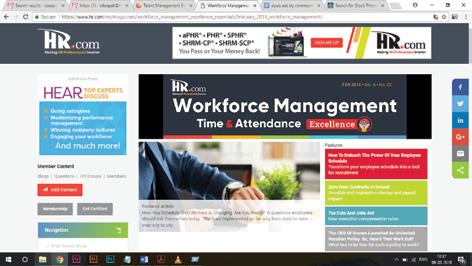
Human Capital Management Webcasts for Certification Credit
HR.com offers various informative webcasts on a variety of topics around human capital management. Webcasts are available live online with a downloadable podcast and a copy of the slides (PDF) available before and after each webcast. Earn all of the required recertification credits for aPHR, PHR, SPHR, GPHR, and SHRM Certifications. HR.com’s one-hour webcasts, excluding demo webcasts, in every HR specialty are pre-approved for HRCI and SHRM credit.
HR Community networking
Join our community members with a similar interest in your specialty of HR. Share content and download research reports, blogs, and articles, network, and “follow” peers and have them “follow” you in a social network platform to communicate regularly and stay on top of the latest updates. These well-established communities are an invaluable resource for any HR professional or manager.
Use these invaluable HCM Excellence (APAC & Middle East) resources today! For more information phone: 1.877.472.6648 | email: sales@hr.com |
How are our HCM Products and Services helping to make you smarter?
www.hr.com
Editorial Purpose
debbie Mcgrath Publisher, HR.com
Excellence Publications
Babitha Balakrishnan and Deepa Damodaran Excellence Publications Managers and Editors
Deepak S Senior - Design and Layout
HCM Excellence (APAC & Middle East) Team
Babitha Balakrishnan and Deepa Damodaran Editors
Chinnavel and Nataraj Ramesh Design and Layout (Digital Magazine)
Chandra Shekar Magazine (Online Version)
&
Babitha Balakrishnan | deepa damodaran Editors, HCM Excellence (APAC & Middle East)



HR Trends to Expect in 2023
The pandemic has been an ultimate test for CEOs as well as HR professionals. With the drastic shift to remote/hybrid work, economic instability, mass resignations, and quiet quitting, things have not been easy on any fronts. The pandemic also shifted employee priorities and now the focus is more on flexible working and holistic well-being. In brief, as we move forward to embrace the new world of work, it is important that organizations prioritize employee needs and adapt and evolve with the changing times in order to attract and retain talent.
What are the biggest challenges and top priorities for HR leaders in 2023? What HR trends can we expect in the year ahead? The November edition of HCM Excellence (APAC & Middle East) includes expert articles and interviews focusing on future HR trends, women empowerment, internal talent mobility, and much more.
In 2023, organizations will continue to focus on mental and physical health. Hybrid work will stay, as many organizations have identi fied it as a permanent or long-term way of working for certain roles. Coaching, mentor ing, teaching, training, recruitment, and digi tal HR are expected to rule the HR fraternity. SVKM NMIMS’ Associate Dean, Dr. Sameer Pingle in his article, Emerging HR Trends For 2023, sheds light on the top priorities and challenges for HR in the year ahead.
Even though 43% of STEM graduates in In dia are women, only 34% of the IT workforce comprises women. Organizations must invest in mentorship programs for women, connecting them with internal and external role models, according to Vasanthi Ramesh,
VP of Engineering for Manageability and Data Protection, NetApp India. Her article, Support Women In STEM To Have Healthy Career Growth addresses the importance of creating an unbiased and non-prejudiced work atmosphere for women in the work place.
On the same lines, Acronis Chief of Staff, Aliona Geckler’s article, Providing Mentor ship Programs To Women in Tech Should Be Every Organization’s Priority, also highlights the relevance of workplace mentoring pro grams for women.
Fujitsu’s VP of HR, Sumit Sabharwal in his article, How Employee Upskilling And Reskilling Can Benefit Your Organization offers valuable insights on the merits of reskilling and upskilling new and existing employees in today’s fast-paced world.
Also read an exclusive round-up on the cur rent HR challenges, opportunities, and future of HR, as shared by top HR executives at the recently held #TASCON22, India’s Largest Talent Acquisition & Sourcing Conclave.
In brief, this edition of HCM Excellence (APAC & Middle East) is all about the current and future workplace trends and strategies to create a future-ready workforce to drive your business forward successfully.
We hope you enjoy reading all the informa tive articles in this edition and get back to us with your valuable feedback!
Disclaimer: The views, information, or opinions expressed in the Excellence ePublications are solely those of the authors and do not necessarily represent those of HR.com and its employees. Under no circumstances shall HR.com or its partners or affiliates be responsible or liable for any indirect or incidental damages arising out of these opinions and content.
EdITOR’S nOTE
OR For Advertising Opportunities, email: sales@hr.com
© 2022 HR.com. No part of this publication may be reproduced or transmitted in any form without written permission from the publisher. Quotations must be credited.
Happy Reading!
Copyright
Our mission is to promote personal and professional development based on constructive values, sound ethics, and timeless principles.
Debbie McGrath CEO, HR.com - Publisher
Sales
Director
Marketing, and Research)
Dawn Jeffers VP,
Sue Kelley
(Product,
send any correspondence, articles, letters to the editor, and requests
For customer service, or information on products and services, call
Excellence (APAC & Middle
Excellence (ISSN
is published monthly by
Submissions
Correspondence Please
to reprint, republish, or excerpt articles to ePubEditors@hr.com
1-877-472-6648 HCM
East)
2564-2049)
HR.com Limited, 56 Malone Road, Jacksons Point, Ontario L0E 1L0 Website Address: www.hr.com
Subscribe now for $99 / year And get this magazine delivered to your inbox every month Become a Member Today to get it FREE! SIGN UP Write to the Editor at ePubEditors@hr.com
In a world of unparalleled challenges (global pandemic, racial injustice, political rivalry, digital 4.0, emotional malaise), uncertainty reigns. Finding opportunity in this context requires harnessing uncertainty and harnessing starts with reliable, valid, timely, and useful information. The Excellence publications are a superb source of such information. The authors provide insights with impact that will guide thought and action.
Dave Ulrich
Rensis Likert Professor, Ross School of Business, University of Michigan Partner, The RBL Group
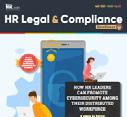
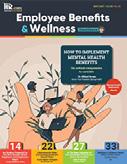



Excellence publications are my ‘go-to’ resource for contemporary and actionable information to improve leadership, engagement, results, and retention. Each edition offers rich and diverse perspectives for improving the employee experience and the workplace in general.
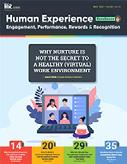
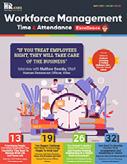
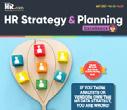

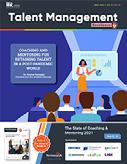
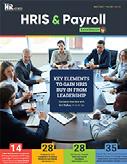
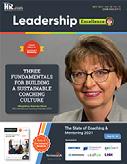

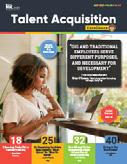
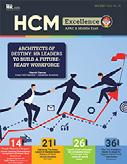
Julie Winkle Giulioni
Author, Virtual /Live Keynote Presenter, Inc.’s Top 100 Leadership Speakers
I regularly read and contribute to Leadership Excellence and Talent Management Excellence. I use many of the articles I read to augment my own presentations and I often share the articles with my clients. They are always quick, right on target for the latest issues in my field, and appreciated by my clients. If you want to stay up to date on the latest HR trends, choose a few of the different issues from the Excellence series of publications.
Dr. Beverly Kaye CEO, BevKaye&Co.

We’re eager to hear your feedback on our magazines. Let us know your thoughts at ePubEditors@hr.com WHY EXCELLENCE PUBLICATIONS?
Emerging HR Trends For 2023

Talent management to employee wellness and compensation, everything is set to change
By Dr. Sameer Pingle, Thadomal Shahani Center
We have witnessed organizational response to Covid-19 and also how organizations adapted after the pandemic. We have seen that both service as well as manufacturing companies adapted to the use of technology. The use of platforms like Microsoft Teams, Zoom, Google Meet, Airmeet and others, for organizational work even after the pandemic shows that these platforms would be used by corporations in the future as well. We also expect more human resources to become digital in the coming years.
In 2023, organizations will continue to focus on mental and physical health. Appointments of full-time and part-time counselors, therapists and meditation experts will be on the rise. Organizations would look for newer organizational designs to incorporate the changing needs and preferences of the younger generation. Hybrid work is going to stay, as many organizations have identified it as a permanent or long-term way of working for certain roles.
Submit Your Articles HCM Excellence (APAC & Middle East) presented by HR.com November 2022 7
COVER ARTICLE
Work-life balance continues to be a priority, especially in service organizations. Talent engagement is expected to change as new employees would be inducted in virtual mode and they may not visit the workplace ever. The companies would focus on virtual team building activities for the workforce. The demand for trainers and consultants with the expertise to provide online training and human resource management consultancy would increase in 2023.
Many industry human resource veterans may decide to become freelancers and prefer to work according to their preferences. It also means that the requirement for a younger workforce as full-time and part-time employees would increase.
When it comes to compensation and benefits, organizations would focus more on Relational Returns, which include challenging work, learning opportunities and recognition and status. In recent years, employees have become less prone to spend their entire professional life in a single company, especially if they trust there is no clear model for personal and professional growth.
Gone are the days when companies used to focus on employee satisfaction. Today, employee experience
has gained paramount significance in professionally managed organizations.









































The demand for upskilling is expected to rise in the future as the tasks, activities, as well as roles, are changing at a faster pace. Companies would like to have their employees perform better in the competitive market. The talent acquisition team is expected to make more use of psychometric tests, artificial intelligence and other tools for employee selection.
One of the major challenges for organizations would be in the area of performance management in a hybrid set up. With the advent of fast-track promotions and leadership positions being occupied by young managers, potential appraisals become critical for modern organizations. It is high time to shift from performance appraisals to potential appraisals for promotions and succession plannings.
The existing key performance areas (KPAs) would not be sufficient to manage the performance of the hybrid workforce. The result-based approach to performance management is expected to fade away soon and companies will prefer behavioral and competency based approaches. It would be interesting to see how companies use them.
Coaching, mentoring, teaching, training, recruitment, and digital HR are expected to rule the HR fraternity in the future.
Dr. Sameer Pingle is Associate Dean, School Of Business Management, at SVKM's NMIMS, Indore.
Would you like to comment?

Submit Your Articles HCM Excellence (APAC & Middle East) presented by HR.com November 2022 8
Emerging HR Trends For 2023
‘HR’s Biggest Challenge Will Be Talent Retention’
“An effective talent management strategy must revolve around building a strong brand culture. It becomes easier to attract the right talent when an organization has a purpose driven by a cause, is known as inclusive, employeecentric, and offers good growth as well as learning opportunities,” says Prashant Mahagaonkar, Talent Manager at Vahak.
In an exclusive interview with HR.com, Prashant shares his views on skills versus experience, what is a good talent management strategy, new trends in employee development, and more.
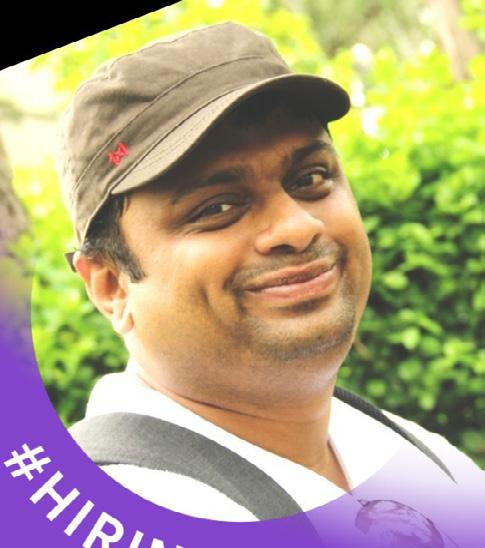
Excerpts from the interview:
What is going to be your biggest challenge when it comes to talent management in the future?
Prashant: The biggest challenge for a modern business is talent retention. In recent years, as many as one-third of the new hires quit within the first six months due to incompatible work environments or poor managers.
At Vahak, we have created an effective employee management strategy and undertaken several workplace initiatives to boost talent retention. Being a modern startup, the team at Vahak is young, extremely dynamic, and dedicated to building India’s most trusted transport community.
Among the key steps taken by Vahak are flexible work hours with hybrid working and generous leave policies that provide a healthy work-life balance to the employees. We offer remunerations that are on par with the industry standards, and we also offer other perks, such as ESOPs, rewards and recognition, besides, team-building engagements like retreats, sports competitions, etc.
Hiring for skills rather than experience. What is your take on this?
Prashant: As a recruiter, you primarily look for experience to ensure that the candidate has the right skills and has also spent adequate time practicing those in real-world business scenarios. It is important to not only do a particular task, but also have the expertise to do it in diverse scenarios.
Submit Your Articles HCM Excellence (APAC & Middle East) presented by HR.com November 2022 9
Straight Talk with HR.com
Exclusive interview with Prashant Mahagaonkar, Talent Manager, Vahak
Q. Q.
For instance, even the most qualified business leaders were not familiar with the impact of the Covid-19 pandemic, however, their experience of handling disruptions helped them regroup and sustain operations.
In my opinion, one can be a little flexible on the experience part, however, it also depends on the role one is hiring for. While the skills are non-negotiable, a candidate having X years of experience instead of Y, who demonstrates the ability to handle a situation well would be a better choice.
For instance, at Vahak we are aiming to grow our user base and achieve a GMV of over $1 billion by the end of the year. Therefore, our planned hiring strategically includes a diversity of experience and skill sets that can help us expand our offerings by including insurance, truck tires and spare parts, as well as build tech-driven features for truckers and shippers.
must revolve around building a strong brand culture. It becomes easier to attract the right talent when an organization has a purpose-driven by a cause, is known as inclusive, employee-centric, and offers good growth as well as learning opportunities.
Technology is a key component. There are AI-based digital solutions that help in the identification and accurate assessment of candidates on various aspects, such as behavioral and cultural fit as well as skill sets. Such tools help recruiters effectively and quickly identify the ideal candidates and are now being integrated by most companies into their hiring processes.
Further, there is a great role for digital communications and social media platforms in cultivating the right company image through information sharing online and engaging potential talent. The company’s vision, policies and strategies are amplified effectively by the social media and web communication platforms, and all these aspects combine to make an effective talent management strategy.
Prashant:
Submit Your Articles HCM Excellence (APAC & Middle East) presented by HR.com November 2022 10 Straight Talk with HR.com
What is your idea of a good talent management strategy? Why? What is the role of new technology in it?
An effective talent management strategy
Q.
Q.
Prashant: The biases can be overcome through a clear top-down mandate by the business founders/ CEOs and HR leaders about the company’s vision, clearly defined policies, and preferences. Secondly, deploying AI-based tools for initial screening and short-listing can eliminate the initial bias.

Q.
Prashant: Employee development has grown beyond annual appraisals and promotions. Alongside career growth, it is important for organizations to continuously facilitate upskilling and reskilling. Technology is evolving rapidly, and if employees are not provided support for continuous skill development, and refresher training from time to time, they will struggle within a couple of years.
Therefore, the focus now is more on building a culture of continuous learning and development. Organizations that have such a strategy in place are able to attract and retain talent better. Another aspect is the focus on inclusion and diversity. Only when diverse viewpoints are present in the solution that is created for the target audience, will the company achieve true success.
Would you like to comment?
Submit Your Articles HCM Excellence (APAC & Middle East) presented by HR.com November 2022 11
Straight Talk with HR.com
How can employers address the inequalities and biases in hiring and employment?
What are some of the new trends you see in employee development?
Support Women In STEM To Have Healthy Career Growth
How to address the lagging numbers of women IT leaders
By Vasanthi Ramesh, NetApp
Womenleaders in IT face career challenges, biases, and self-created barriers in male-dominated peer groups. Surprisingly, 43% of STEM graduates in India are women, however, only 34% of the IT workforce comprises women. As we go up the senior ranks, this number drastically drops to less than 17%. We see a massive drop-out of women in STEM in the early stages of their careers in IT.

Further, the pandemic has heightened inequalities at work and home, causing higher attrition rates among women than men.
Unless every organization intervenes and creates initiatives to enable women in STEM to have healthy career growth, we will end up with a shrinking pipeline of women in STEM to women leaders in IT.
Submit Your Articles HCM Excellence (APAC & Middle East) presented by HR.com November 2022 12
Top Pick
Understanding the Existing Challenges
Over the last decade, many IT companies have be come champions of inclusion, diversity, and meritoc racy and oppose any form of gender discrimination. Yet, we still see lagging numbers of women IT leaders. Throughout my career,I have noticed two significant challenges when growing women IT leaders.


The first challenge is the reluctance of women to internalize their accomplishments. Generations of patriarchal norms have made women hesitant to claim their success. A good intervention would be to have an unbiased celebration of successes at the workplace. Every leader in the organization must be an ally for women and mentor them to present their accomplishments authentically and persuasively. Celebrating successes would create a psychologically safe platform for women to claim their success and thrive in their careers.
The second challenge is that many women see risk and reward as orthogonal goals. In my career, I have seen multiple women who believe career growth implies taking on more responsibilities. They do not
associate it with promotions, pay raises, or both. While additional responsibilities are a natural part of the job, there is a parallel increase in the benefits that come with them.
Further, in an organization where many role models are male or have traditionally masculine qualities, there is a greater fear of failure and a stronger hesi tance to take up these roles. Organizations must invest in mentorship programs for women, connecting them with internal and external role models. I owe my career growth to my mentor, who instilled in me the confidence to be bold with risk and reward.
developing a Growth Mindset
Few things in this world are as powerful as affirma tion. By working with a mentor, women gain real-world insights that help them seize opportunities to achieve their career goals. Further, embracing a growth mind set will help women take charge of their careers and not be influenced by biases and beliefs from within and outside.
While this is a start, much more must be done. Creat ing an unbiased and non-prejudiced work atmosphere in traditionally male-dominated industries is a good start, followed by more robust policy recognition. We can achieve a more significant women-led presence on international platforms when representing corpo rate India. Together we can create a visible, more deci sive leadership and equal opportunities for women to compete for and win based on merit and capabilities.
Would you like to comment?
Submit Your Articles HCM Excellence (APAC & Middle East) presented by HR.com November 2022 13 Support Women In STEM To Have Healthy Career Growth
Vasanthi Ramesh is the VP of Engineer ing for Manageability and Data Protec tion at NetApp India.
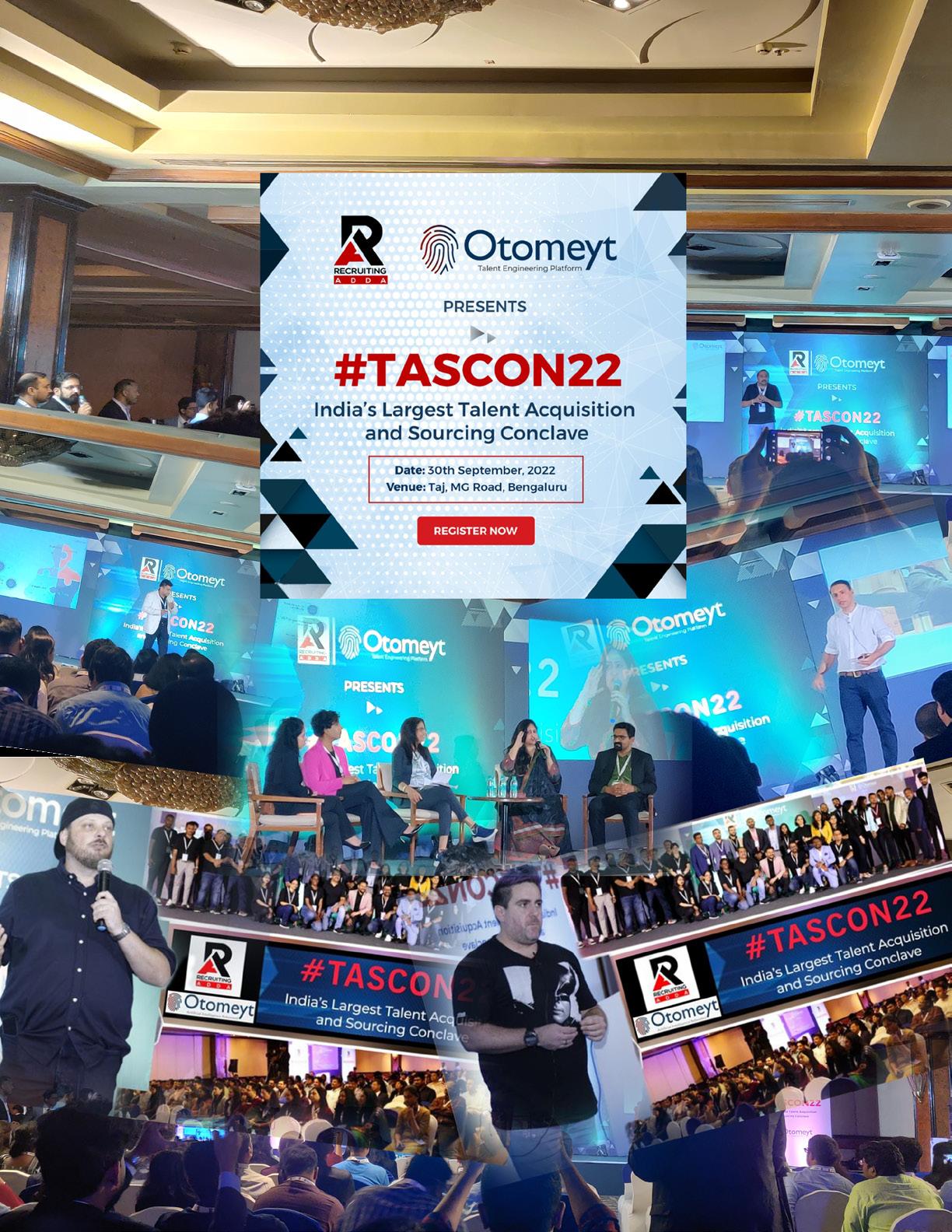
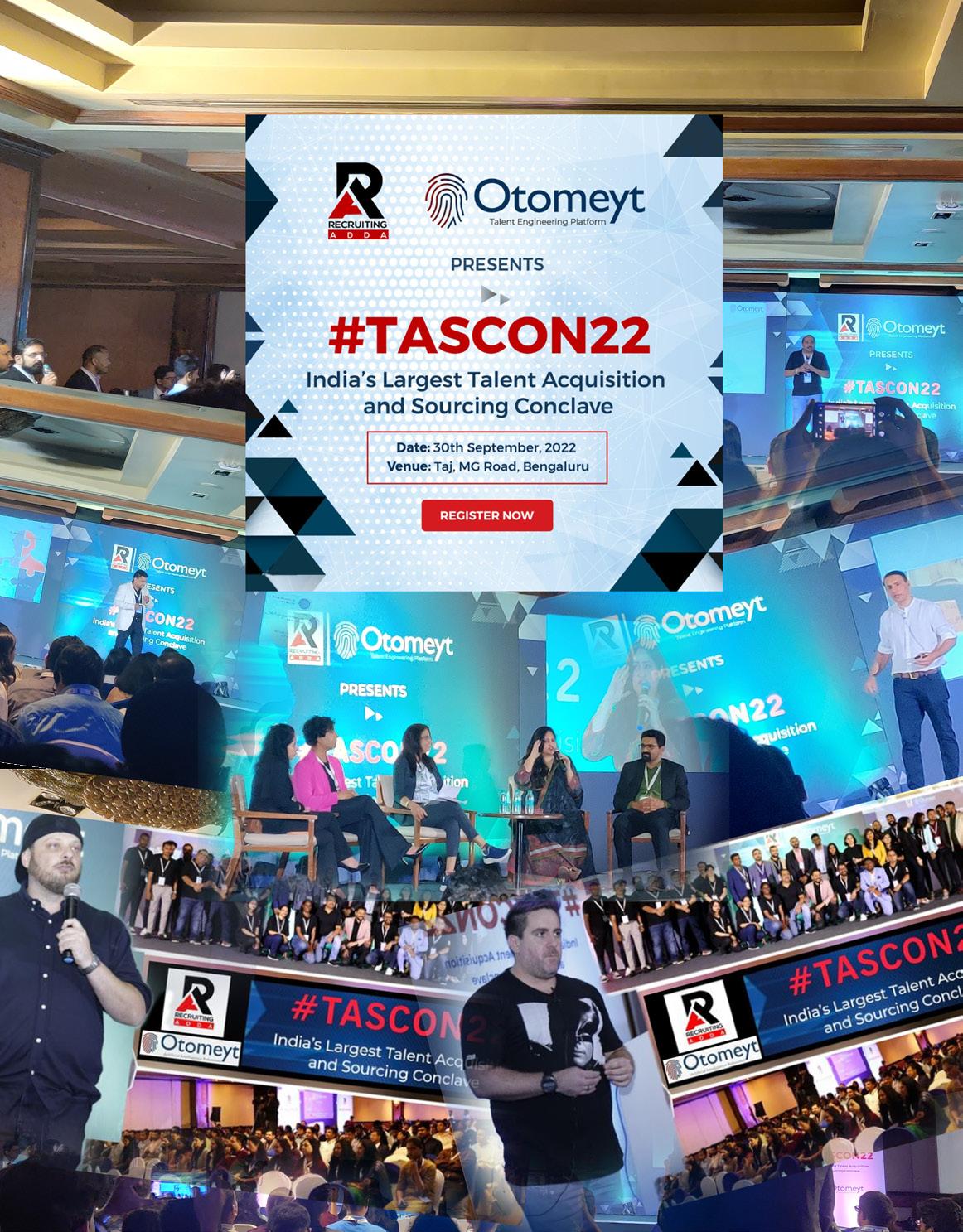
Source-@recruitingadda
Talent Acquisition: Challenges, Opportunities And The Future
Highlights from #TASCOn22
By Excellence ePublications Team
Moonlighting, quiet quitting, workplace equity, economic instability, mass layoffs, finding quality talent, etc. - challenges that talent professionals in India are facing are no different from their counterparts across the world.
India produces 250,000 graduates, including 100,000 engineers, every year. However, not even 25,000 are hired. Education standards continue to be below industry standards and there is a huge shortage of talent in the industry.
“Upskilling and reskilling is the only way forward for all organizations,” noted Sheben Rawat, Talent Manager, Technology Hiring, at Z5 Associates and Radha Shriharsha, Global HRBP, A.P. Moller, at Maersk during a panel discussion, titled ‘Future of Talent Acquisition’, at TASCON22 – Talent Acquisition and Sourcing Conclave conducted by Recruiting ADDA, formally Sourcing ADDA, in Bengaluru, Karnataka, India.
They also added that talent recession, work from home and moonlighting are here to stay and the future workforce will be a combination of machines and humans. Organizations that embrace artificial intelligence and machine learning will stand the test of time. Though most organizations have started on the path, nobody is even halfway through, they further added.
When over 500 human resources and recruitment professionals gathered at the TASCON22 event, they delved upon several topics, ranging from strategies to engage candidates on social platforms, to best practices for attracting and sourcing quality and diverse talent, to the future of talent acquisition (TA) and talent technology, to the role of data and analytics in TA, and to building a future-ready workforce, among others.
"Sourcing is like story telling. What we say isn't important, but how we say it. Essence of storytelling is to either say something new or find a better way to say it. Move your story from the 'I' story to the 'We' story. Recruiters' script must have a novel element in it to compel applicants. Script has to evolve with the target audience," said Ameen Haque, Founder of Storywallahs, in his keynote address at the event.
HR.com Talent Acquisition Community Facilitator Matt Charney, who spoke on ‘What Candidates Really Want’, noted that there are over 102.2 million open jobs in India, and about 78 million hiring will be done during 2022-23 period. However, 43% of satisfied and highly engaged employees would consider other opportunities and 33% of employees would leave even without an offer in hand.
Submit Your Articles HCM Excellence (APAC & Middle East) presented by HR.com November 2022 15
Covid-19, economic instability, and people's changing priorities have transformed the world of work, workforce and workplace. There are several challenges and opportunities awaiting recruiters in the future.

"The easiest to source is niche roles and the toughest to source is the so-called vanilla roles. When you try to source for a niche role, you key in one-two keywords and you get 100-200 profiles. The only way to weed out candidates is via engagement and smart reference generation techniques. However, when you source for roles like UI, backend, data engineering, etc., data is available in plenty and that brings in the problem of plenty," said Ashfaq Ahmed, Founder, of RecruitingMonk.
Workplaces are facing huge challenges in terms of diversity, equity, inclusion and belonging and it is high time organizations go beyond gender when it comes to DEIB, and strive to build a culture that nurtures all sort of talent. “DEIB: It is time to go from mindset change to cultural change inorder to go to acceptance from tolerance," noted Rovin, Senior Manager, Equity, Diversity, Inclusion & Belonging, at Randstad, during a panel discussion at the event.
Here we bring you a compilation of some of the important topics discussed during the event and what experts have to say about them
Submit Your Articles HCM Excellence (APAC & Middle East) presented by HR.com November 2022 16
Talent Acquisition: Challenges, Opportunities and The Future
The Future Of Talent Acquisition
 Jay Tarimala, TA - Sourcing Manager, Emmes
Jay Tarimala, TA - Sourcing Manager, Emmes

● Due to work from anywhere and remote acceptance by candidates in the marketplace, companies that allow flexibility are at a distinct advantage compared to the ones that are rigid, as they are getting more qualified applicants for their advertised roles.
● More companies are starting their talent intelligence function and/or enhancing the teams to ascertain countries that have a pool of talent for specific skills, notable gaps in skills of existing staff, etc. to power business growth.
● More data-driven recruiting and using CRM systems for talent pool insights
● Candidate nurturing to reduce time to hire and increase the volume of hires
● Revisiting JDs and assessing whether degrees from premium institutes or degree requirements have any bearing on the success of the individual hire and relaxing some hard-wired restrictions.
● Very focused employee engagement surveys to find new hire satisfaction, hiring manager satisfaction levels, and retention risks.
The TA landscape is undergoing a change because of the new changing market scenarios and the need to adapt to the changes from time to time. In failure to do so, the company will miss the bus and struggle to fulfill its requirements with talent. A good hiring process alone won’t guarantee a candidate’s joining. The TA team must stay on their toes throughout the process without letting their guard down.
Submit Your Articles HCM Excellence (APAC & Middle East) presented by HR.com November 2022 17
Navin Patel, Global Talent Acquisition Head, Affine
Talents were early concentrated in 1 or 2 main job platforms and that would suffice. But at present, talent is spread out across multiple channels like job portals, social media platforms, messaging apps, hackathons, and tech platforms like GitHub, Stack Overflow, etc.
The mode of interviews has gone digital with most of the assessments and interviews happening online over phone/video, and with some talents indulging in proxy interviews and bypassing the systems smartly to gain entry into an organization. People have become more mobile than before and do not shy away from jumping to another organization within a short period of time. Due to the pressure of fulfilling a demand to avoid business revenue loss, gone are the days when talent was purely being rejected at the screening stage due to stability issues alone.
The offer decline rates have gone higher and hence more effort is needed to fulfill a requirement. Earlier, the recruiters would avoid making an offer to a candidate, who has already been offered elsewhere and is still shopping around for higher CTC.
Due to the shortage of quality talent, some of the companies have resorted to making counter offers by not just matching the offer with a slighter higher compensation, but also by offering joining bonus and other perks to win the war of talent. The surge of startups with big funding and product companies going out on their own to acquire talent directly, instead of going to an IT solutions provider paying much higher salaries, also disrupted the market parity leading to wider gaps and an aggressive fight for talent.
Shwetha Ram, Head, Human Resources, Future Generali India Life Insurance

Technology is undoubtedly going to alter the landscape in a considerable way.
But ultimately, technology can only function as a catalyst, a bridge for what actually constitutes your organizational culture.
It is critical, therefore, for us to utilize the powers of tech to convey our proposition to candidates. But as is self-evident, first we need to come up with a value proposition that is worthy enough to entice the best of the best out there. At Future Generali India Life Insurance for instance, with the basic tenets of our EVP- ACE With FG Life, as our underpinning, we constantly relook at and refine the constituent elements.
This is where the battle lines are going to be drawn eventually. Making an offer that can’t be refused. Through our tech-enabled systems, we are in a position to holistically and creatively communicate how the lifecycle of the candidate can shape up with us. It is up to us to harness these resources and not miss out on any aspect that can potentially prove to be a deal breaker.
Hence, we have to both employ technology as well as innovatively use it to transport the foundation of who we are and what we offer, adequately and effectively.
Submit Your Articles HCM Excellence (APAC & Middle East) presented by HR.com November 2022 18 THE FUTURE OF TALENT ACQUISITION
There are some highly effective and growing trends that are emerging now. One is the usage of technology to narrow in on the good fit candidates. There are online assessments for aptitude, and skills that provide a far more accurate and data-driven analysis of a candidate’s suitability than conventional

practices which could be affected by bias or human error. Companies have become very specific about the skill sets, experience and attributes of the candidates they are looking for. There is a much greater value on cultural fit than ever.
Even if a candidate comes across as someone with the right qualifications and experience, but doesn’t match the vision or work culture, they are unlikely to be hired. Another major trend is that the employees are paying greater attention to their growth and development plans than ever, and acceptance of an offer is mostly not dependent on remuneration only.
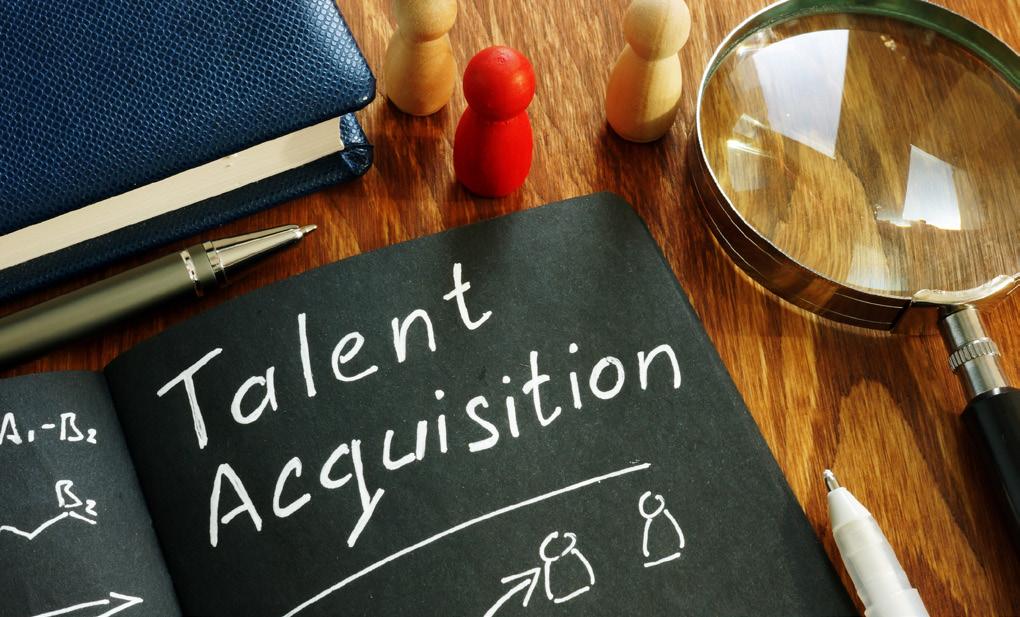
Submit Your Articles HCM Excellence (APAC & Middle East) presented by HR.com November 2022 19
Prashant Mahagaonkar, Talent Manager, Vahak
THE FUTURE OF TALENT ACQUISITION
The Future Of Talent Technology

 Tarimala, TA - Sourcing Manager, Emmes
Tarimala, TA - Sourcing Manager, Emmes
ATS-CRM combo (in one vendor suite) may disrupt legacy ATS business. Now, TA leaders are not just happy with just finding talent, but also want to know the engagement part of cultivating talent, i.e. skillfully altering messaging, checking which methods and messaging types work and essentially expecting recruiters to become recruitment marketers.
Covid ensured video interviewing has taken off big time. We can expect consolidation in the marketplace. Interview scheduling (to and fro) is a major pain point for recruiters and recruiting coordinators. Expect more interview scheduling software to be part of the ATS suite or stand-alone solution vendors gaining more market share.
The HR technologies that will be a game-changer for talent acquisition teams in the future are:
1. Talent aggregator platform that would bring all the talent available in the market in one place and avoid the need for recruiters to look at multiple tools and platforms to find talent.
2. Automated ATS with high accuracy and reliability: A big challenge that TA professionals face is in screening and matching the talent to the job. An automated ATS can process candidates automatically from the time of application to the offer stage. i.e., allow candidates to apply for a job in simple steps and based on their skills auto-assign assessment, and based on the scores facilitate interview scheduling process with the help of a chatbot, post clearing of all rounds auto-trigger a link for document collection, recruiters will then negotiate and close on an offer. Automated post-offer engagement takes over and provides a window to the candidates for specific support.
Submit Your Articles HCM Excellence (APAC & Middle East) presented by HR.com November 2022 20
Jay
Navin Patel, Global Talent Acquisition Head, Affine
Shwetha Ram, Head, Human Resources, Future Generali India Life Insurance

I believe technology will be highly instrumental at both ends of the spectrum vis-à-vis the employee lifecycle.
When it comes to the hiring process, a robust applicant tracking system that enables the employer to streamline and stay on top of the process and also allows the candidate to have a seamless experience is absolutely key.
Since we are on the topic of “talent” acquisition, the recruitment module should also have the ability to integrate different kinds of assessments, ranging from aptitude to personality based, depending on the position you are hiring for.
Now coming to the other end of the cycle, HR tech also plays a significant role in determining the efficacy of your talent acquisition process by analyzing employee engagement, performance and even existence. Through a well-rounded analytics framework, you can actually identify patterns pertaining to hiring source, experience, age, gender, background and so much more.
This will ultimately determine the intricacies of your recruitment process by equipping you to focus on those sets of candidates that are more likely to be in sync with your organization in the long run.
 Mike Cohen, Founder/Sourcer,
Mike Cohen, Founder/Sourcer,
Open APIs, reduce competition/reliance - there’s enough business for everyone and the more integrated systems can be with each other, the more business they will earn. Stop building tech because a software engineer and entrepreneur had a good idea. Include recruiters/sourcers early on - it’s not just about capabilities, it’s about fit within a logical or pre-existing workflow.
Submit Your Articles HCM Excellence (APAC & Middle East) presented by HR.com November 2022 21
THE FUTURE OF TALENT TECHNOLOGY
Wayne Technologies
DEI&B: What’s Working, What’s Not; What More Can HR Do
DEI&B has been a game changer for the corporation. I see workplaces are more tolerant, more woke, and more resilient because of the mere existence of DEI&B as a function. The major challenge is getting the buy-in from the leaders

in order to implement any ideas, strategies, and planning around DEI&B. Tokenism and lip-service are causing more harm than ever imagined for the DEI&B in the workplace.
Leaders must understand that they have to pave the way for DEI&B to come and take the center stage in any business for effective implementation of DEI&B strategies. DEI&B is not a one-person show, it requires an army of changemakers working on the ground, it requires an army of leaders constantly taking a visible stand contributing to the DEI&B initiatives, it requires budgets, it requires partnership, and it requires collaboration.

Submit Your Articles HCM Excellence (APAC & Middle East) presented by HR.com November 2022 22
Rovin, Senior Manager, Equity, Diversity, Inclusion & Belonging, Randstad India Private Ltd.
Shwetha Ram, Head, Human Resources, Future Generali India Life Insurance

I always believe that the best and most compelling argument to sustain a diverse workforce is the business case associated with it. More diversity objectively means more avenues, more coverage, and better growth.
The challenge is to break through the inertia that is already prevalent and the initial hurdle of overcoming the related causes. People, as is natural, tend to become comfortable with a certain way of life, embracing the routine over the revolutionary.
The same principle applies to employees at work.
If it is a task to go out and find good women colleagues, they will prefer hiring below-par resources that are readily available.
It is our job as HR professionals and DEI champions to accompany and support the business to take that leap.
In some cases, it might involve influencing stakeholders by making them understand the implications for business and in some cases, it also might entail incentivizing diversity hiring.
The goal, fundamentally, is to onboard diverse talent and empower them to flourish. It’s not just they who deserve a chance, it’s your organization too which deserves that chance to evolve and excel.
Submit Your Articles HCM Excellence (APAC & Middle East) presented by HR.com November 2022 23
DEI&B: WHAT’S WORKING, WHAT’S NOT; WHAT MORE CAN HR DO
Moonlighting, Talent Recession, Great Resignation And Quiet Quitting: Cause And Solution
 Jay Tarimala, TA - Sourcing Manager, Emmes
Jay Tarimala, TA - Sourcing Manager, Emmes
Moonlighting has always been quietly happening on the sidelines until it came to the forefront based on the IT consulting firm’s media statements referring to it as unethical and layoffs began. Especially in the tech sector, there is a finite time to maximize earnings based on the talent and ability an employee may possess. It’s the desire coupled with the demand for such expertise that is driving the phenomenon further. Now that employees know how an employer may detect moonlighting, it may get difficult for employers to detect moonlighting issues. We are beginning to see some employers publicly encouraging moonlighting for their employees but do not expect it to take off.
Quiet quitting – Employees may feel trapped in a corner either due to their ideas not getting their due or others’ work getting dumped on them, or the Covid aftermath has probably made them realize that work is a means to a living rather than live to work. It’s incumbent on employers to create a safe space for the employees’ ideas, and grievances and create the culture necessary for the employees to believe in the company’s mission and values and not always focus on P&L for every activity.
Covid did put a big dent in the economy for a short while and companies have adjusted quickly to fully remote or hybrid working options, which fuelled waves of resignation. Suddenly, companies realized that they could hire from a much wider geographic pool and it led to a huge talent shortage in many industries. Covid also ensured a lot of older people went out of the workforce itself and the industries that retrenched a lot of people in specific industries in its aftermath are now struggling to attract workforce (hospitality, airlines, etc.)
Submit Your Articles HCM Excellence (APAC & Middle East) presented by HR.com November 2022 24
In the end, there is no silver bullet to attracting and retaining talent. Brand awareness, good culture, candidate engagement, minimizing hiring bias, reiterating company values from time to time, better interviewing techniques, simplifying business processes, engaging employees and guiding them on their aspirations, and not restricting their creative pursuits can enhance talent attraction and reduce attrition.
Great Resignation: The demand gap in the market led to a quantum jump in the number of candidates, who were getting multiple offers with 50% to 300% hikes. Earning more money and remote jobs took precedence over the loyalty factor leading to higher attrition across industries.
Quiet Quitting: Due to working from home, employees started feeling disengaged and not valued by their employers. New employees were joining with higher CTC and better roles, while the ones sticking around were feeling deprived of the opportunities being opened to the market instead of being presented to the existing employees by way of upskilling, promotions, or CTC revisions.
Talent leaders can address this issue only to a certain extent based on the factors that are under their influence. Talents are very demanding and have multiple expectations from their employer that cannot be fulfilled for all.
Affine
These are caused mainly due to the huge gap created between talent demand and supply. The new generation of employees is not afraid to express themselves and are very clear about what they need and ready to move on if they are not getting it from their employer.
Moonlighting: During the Covid-19 pandemic, people got the opportunity to work from home and hence could moonlight and shuffle between work that they could not while working from office.
Talent Recession: It is mainly seen in talents related to IT technical skills that are advancing so rapidly, leading to a dearth of talent carrying relevant experience in these new-age skills. Due to the pandemic, talent was also displaced/ dispersed to various geographic locations, and are preferring to work in the same location or continue to look for WFH jobs.
Some are expecting better CTCs or promotions or onsite opportunities, some are expecting permanent work from home, and others expect a change in role/job and upskilling.
From a talent attraction perspective, they need to ensure they are doing everything to provide a great candidate experience and address some of their expectations of the candidate, if not all. Clear communication of WIFM (What’s in it for me) for the candidate will help attract and keep them engaged.
From a retention perspective, talent leaders must ensure that candidates, who are onboarded, are being treated fairly and given what was promised/ committed to them during hiring, and avoid any early attrition.
For existing employees, employers have to ensure that their compensation is at par with what they are paying to attract new talent and that internal employees are the first ones to get a chance to apply for internal opportunities. They should also carry out surveys that will provide them with inputs on the reasons for quitting e.g., higher CTC, WFH option, better roles, job opportunities, etc.

Submit Your Articles HCM Excellence (APAC & Middle East) presented by HR.com November 2022 25
Navin Patel, Global Talent Acquisition Head,
SOLUTION
MOONLIGHTING, TALENT RECESSION, GREAT RESIGNATION AND QUIET QUITTING: CAUSE AND
Shwetha Ram, Head, Human Resources, Future Generali India Life Insurance

Talent, by definition, signifies the presence of something singularly special and distinctive. Therefore, to effectively engage with it, you need to desist from employing measures that are unidimensional or all-encompassing.
Every talented individual that you seek to take on board and hold on to, will invariably come with their own set of ambitions, expectations, and idiosyncrasies. In some rare scenarios, they may also be unaware of what they want. To optimally engage this diverse workforce, or a majority of it at least, you would need a structure that is capable of incorporating aspects of most of these desires or at least beginning to acknowledge them.
A competitive salary, wings to a career, continual upskilling, and lest we forget, a comfortable place to work and thrive - all of these and more have to be factored in when designing a talent program. Our goal at Future Generali India Life Insurance too is to consistently move towards a scenario where we are ideally placed to fulfill all these varied needs for each professional through a flexible and individualized mechanism.
 Prashant Mahagaonkar, Talent Manager, Vahak
Prashant Mahagaonkar, Talent Manager, Vahak
The key to handling such issues is to understand the optimal talent requirement of your organization and synchronize the business growth plans with the aspirations of the employees. Quality talent is hard to find, and usually aspirational. Companies that go on a hiring spree and end up overstaffing themselves during peak times are also more likely to go for layoffs when adversity hits. On the other hand, if there is no adequate focus on work-life balance, and fulfillment of growth goals of the employees, there will likely be resignations and quiet quitting instances.
As an employer, it is important to maintain a clear channel of communication with the employees and ensure that their remuneration and expectations related to work conditions are paid attention to. No company can have zero attrition, but a considerate approach can help reduce the numbers.
Submit Your Articles HCM Excellence (APAC & Middle East) presented by HR.com November 2022 26
MOONLIGHTING, TALENT RECESSION, GREAT RESIGNATION AND QUIET QUITTING: CAUSE AND SOLUTION
Sourcing: Challenges And Opportunities
 Jay Tarimala, TA - Sourcing Manager, Emmes
Jay Tarimala, TA - Sourcing Manager, Emmes
● Current job descriptions are mostly pedestrian. It does not give an understanding to prospective employees on what they will get in return (career path, detailed info on benefits, the types of projects they get to work on, etc.). There is a dearth of quality talent, who can be productive to the employer within the first 60 days, hence the desire to obtain such ready talent.
● Employers hire a lot of entry-level talent, but can do a lot more to get them to be productive and invest in them.
● A lengthy application process is a big turn-off to a lot of qualified talent. Companies would want to take a look at their application drop-out rates and simplify it to a one-two-click application process with specific qualifying questions added to the process.
● A lengthy interviewing process (anything more than 3-4 rounds of interviews) is a major turn-off for qualified candidates, and a delayed feedback process can drive candidates off.
● Workloads for recruiters can be quite brutal and it does not give them the room to build talent pipelines that can ensure better conversion.
● Training the recruiters in business and technical aspects of the roles to hire for, ensures better resume match for hiring managers and builds trust in the recruiters for long-term success.
● There is a considerable level of difficulty for women who have taken a break from work due to caregiver and or family responsibilities to get back to the workplace. Even though several firms have their returnee programs in place, the number of people hired through this program is minuscule and does not move the needle much.
● Veteran hiring could be an avenue for employers to source quality talent in similar disciplines (logistics, procurement, physical and IT security, policy making, HR to name a few)
Sourcing technologies (contact finders embedded into the ATS-CRM suite, Linkedin integration right out of the box, sourcing profiles at the click of a button) are expected to reduce the recruiters time spent on such activities, freeing them up to focus on more candidate engagement and expect them to corner market share.
Submit Your Articles HCM Excellence (APAC & Middle East) presented by HR.com November 2022 27
Mike Cohen, Founder/Sourcer, Wayne Technologies

The biggest challenge from what I’ve seen actually comes down to the metrics that sourcers/ recruiters are being held to. The metrics being proposed by most management aren’t promoting high-quality work, they tend to promote a higher number of revolutions. This is causing a “lowestcommon-denominator” approach which is to say that recruiters/sourcers are focused on just “hitting their numbers”, not getting better at their job to increase efficiency/efficacy. The metrics you hold people accountable to, drive the areas of focus and achievement of those being held to them.
Amalgamation of technology/automation and creative strategy is probably going to lead the way. Pulling back from trying to find a “silver bullet” to cure all recruitment woes. Not relying on technology to do your job. And coming up with solid strategies for finding candidates that go beyond buzzword bingo.
Shwetha Ram, Head, Human Resources, Future Generali India Life Insurance

Recruiting the best brains in this day and age is a challenge, indeed. Those times are passé when the talented bunch would be predictably scooped up by the big, major-league organizations.
A cursory glance at the trends today will tell you where many of them are headed now. A deeper dive will tell you why they steer in that direction. In short, the notions of a safe and secure job have been upended in the 21st century and professionals, at least the young ones, have breathed life into the risk-taking, entrepreneurial spirit within themselves.

Therefore, even Generali, a Fortune Global 500 company, cannot be complacent when it comes to attracting talent. The competition is fierce with the barriers of old vs. new stable vs. mercurial being broken when it comes to enterprises. Today, candidates listen to themselves first and then look at the drawing board, rather than getting in and subsequently adjusting.
To source and hire such talent, one needs to discern what primarily drives them, and as I outlined before, it could be a combination of different things. Accordingly, one can tailor their programs and policies. It’s a fast-moving game at the end of the day and you have to be ahead of it.
Submit Your Articles HCM Excellence (APAC & Middle East) presented by HR.com November 2022 28
SOURCING: CHALLENGES AND OPPORTUNITIES
Would you like to comment?
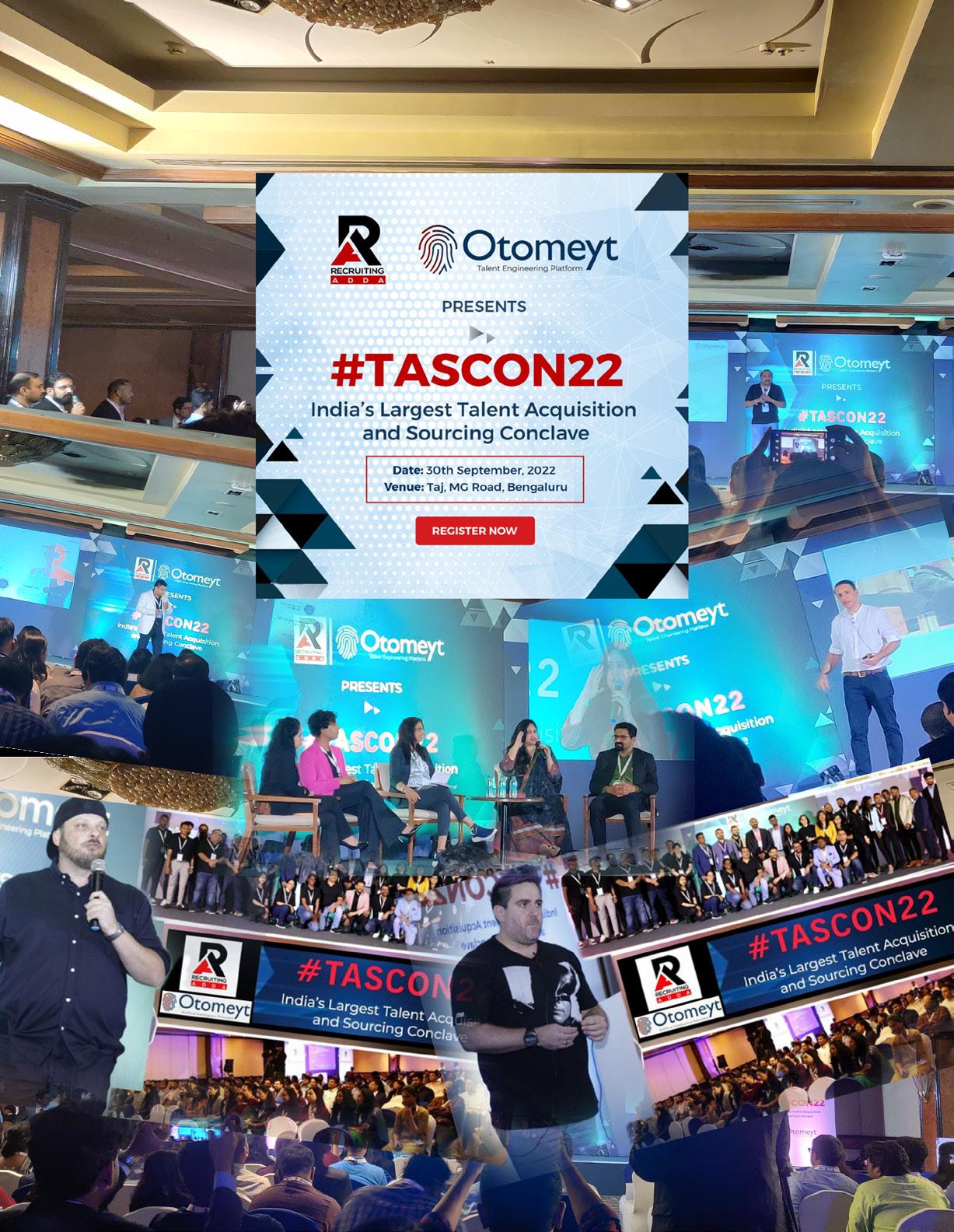
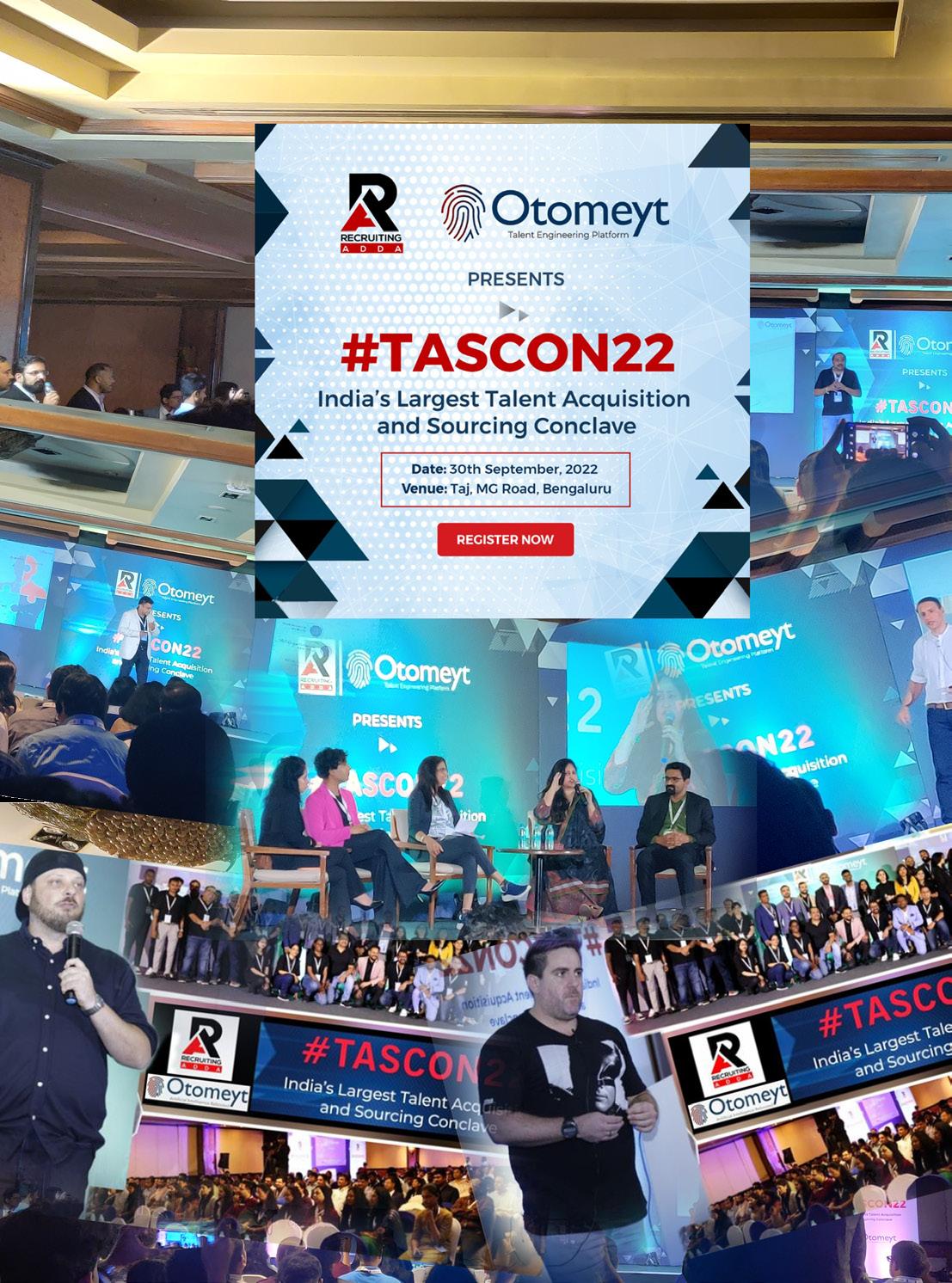
Source-@recruitingadda Source: @recruitingadda
Jeyamalini
Jeyamalini has over 20 years of expertise in transformational HR practices in large multinational corporations, as well as other Indian business entities, including Siemens, Citigroup, AstraZeneca, and Huhtamaki. She sets a strong and motivating vision for HR strategy that supports organizational change.
Jeyamalini is a powerful people strategist and a certified coach. She has been at the forefront of implementing best-in-class HR practices to drive organizational transformations that have significantly impacted the business world.
In an exclusive interview with HR.com, Jeyamalini shares what has been driving her for the past 20 years in HR, and what she has learned over the years.
Inspiring the Next Generation of HR Leaders CHRO CORNER
Where do HR leaders draw inspiration from? What are their worst nightmares? How did they stand the test of the changing times?
In this segment, we will trace your journey to the top.
This is your story - a story that is made of extraordinary accomplishments, methods that helped you overcome adversity, innovative programs that you led, and fundamental changes that you brought in. It's your chance to inspire the next generation of leaders.
Exclusive Interview With Jeyamalini natesan, Head, HR & OHS, Huhtamaki India

Excerpts from the interview:
Jeyamalini: My HR journey has been exciting, with several possibilities for learning, sharing, and growth. I have had the good fortune to work in a variety of industries, including consulting, automotive, banking and financial services, pharmaceuticals and life sciences, chemical manufacturing, and, most recently, the packaging sector.
I also worked for a startup for a brief time. All of these experiences have been quite beneficial in terms of learning and applying some of the greatest people practices in the firms where I have worked.
I have also had the opportunity to work in large MNCs, driving the people transformation agenda for business growth. These experiences have given me a thorough understanding of not just diverse company models, markets, and strategies, but also how HR can be changed to move to a more progressive level in order to bring corporate success.
Submit Your Articles HCM Excellence (APAC & Middle East) presented by HR.com November 2022 30
Natesan is the Head of HR & OHS at Huhtamaki India.
QWhat has your HR journey been like and what influenced you the most to have a positive impact on your career?
Name:
Designation: Company:
Jeyamalini Natesan
ever-changing culture. Every company is unique and has its own culture, which is driven by individuals, who are change agents.
Total number of employees:
When did you join the current company:
Total experience in HR:
Head of HR & OHS Huhtamaki India Ltd approx. 4,500 Aug 2021 20 years
Hobbies:
What book are you reading currently?:
Travel ‘Catalyst’ by Chandramouli Venkatesan
The Covid-19 pandemic taught us to flourish in situations we had never encountered before, and we still managed to recover. Today's workplace is much more advanced, with employees questioning the "purpose of going to work," thus we must make it meaningful and interesting for them.
Flexibility and adaptability have become key drivers and employees are clearly looking for work life balance and organizations have embraced this very quickly placing employee wellbeing as one of the key priorities as well as accelerating the use of technology to drive efficiency and productivity.
Q
learnings from the challenges you faced?
Jeyamalini:
1. Continuous learning is important because when you stop learning, you stop growing.
2. We need to stay modest and grounded—this enables one to communicate with reality and stay focused.
3. Always focus on sharing data and ensure to take key decisions backed by information with data.
Jeyamalini: I was lucky to have had a strong start to my career working directly with MDs and CEOs. So, I understand what the company wants from HR. HR issues may arise on a daily basis since we work with individuals, and everyone is unique and has different degrees of expectations from the business.
The capacity to be agile and think outside the box in order to give solutions, while maintaining the values of the organization and meeting employee expectations, are critical. So, hurdles are opportunities for me.
How do you see workplace culture evolving over the years?
Jeyamalini: An important thing that remains constant is "Change," and the sooner we recognize this, the more prepared we will be to deal with the
Jeyamalini: Every day is an opportunity to learn and accomplish something new. I have learned to see the good in everyone and to enjoy the little things in life. "The attitude of gratitude” is what motivates me. The world is full of opportunities we need to be able to identify those opportunities. There is no compromise for hard work.
Jeyamalini: As long as you enjoy what you do and set your priorities right, you have got your balance right as well. We need to find a purpose in everything we do; it will help maintain the balance in life.
Submit Your Articles HCM Excellence (APAC & Middle East) presented by HR.com November 2022 31
Can you share the top three
Where do you draw inspiration from? What do you have to say to those who are still struggling to find a place in the boardroom?
Where do you draw the line when it comes to work-life balance?
CHRO Corner
What were your challenges during the early days of your career? What are those today?
Q Q Q Q
What fundamental change(s) (in terms of culture) have you brought into your company?
Jeyamalini: At Huhtamaki India, we strongly believe in championing community building that gives employees a sense of belonging, nurturing, leading to overall productivity and a happy working environment. We have been able to build a progressive work culture that is driven by performance. I feel proud to say that the work environment at Huhtamaki India is engaging, happy and supports employee well-being and development.
At Huhtamaki India, our employees are extended families, where the provision of a safe and secure work environment is the biggest priority. We instill strong values of Appreciation & Encouragement and our HR initiatives have been specially crafted to aid our valued employees to make a better version of themselves with every passing day.
Our employee recognition and gratification go beyond the confines of the workplace. We participate in their joys and celebrations, be it weddings, birth of a newborn or student education. In times of
emergencies, we have their back with constant support through our programs. We aim to see our employees grow and prosper and create similar initiatives for our employees to not only enjoy the job but feel at home with Huhtamaki.
What are some major changes you see affecting HR within the next few years?
Jeyamalini: The industry has witnessed major changes in the past few years. Due to the pandemic, employees got used to working from home for almost two years. While a mixed fraction of employees still prefer working from an office, many discovered that they were happier and productive working from home.
Companies must be able to bring in a suitable option and flexibility for such scenarios. Equally, HRs must come out with favorable policies for the employees to continue working from office. There have been increased expectations in employees post the pandemic and they prefer working with companies that are offering benefits related to health and wellness, mental health, family provisions, etc.
We feel that remote working will continue to stay in the coming years. Other changes will include more importance on employee wellness programs, employee development and training programs to have a skilled workforce. I also feel that the great resignation will continue to be a challenge and companies will continue to struggle for getting efficient employees.
Would you like to comment?

Submit Your Articles HCM Excellence (APAC & Middle East) presented by HR.com November 2022 32
CHRO Corner Q
Q
The Role Of Empathy And Coordination In Healthy Workplace Competition
By Gaurav Bhagat, Gaurav Bhagat Academy
For the steady growth of an organization, healthy internal competition between employees can often be considered as a potent stimulant. In most organizations, highly motivated employees often tend to

outperform their peers and stand out through superior performance.
Many research studies have brought forth that healthy competition between employees can motivate them, encourage them to put in more effort, and
thereby deliver more. Competition can be a major enabler in boosting physiological and psychological activation, which can prepare the body and mind of a professional for increased effort and better performance.
Submit Your Articles HCM Excellence (APAC & Middle East) presented by HR.com November 2022 33
Healthy competition between employees can motivate them and encourage them to put in more effort
Top Pick
While some companies strategize cutthroat work culture to differentiate employees based on their performance and encourage the prevalence of competition within the workplace, others might adopt a different strategy to create a collaborative work culture by primarily focusing on cooperation and consensus-building.
Some companies might partially adapt to the culture of competition among employees in the workplace; for example, by encouraging competition in the sales team and collaboration in the manufacturing team.
In any scenario, it has been a common observation that there are certain pros and cons of internal competition in the workplace. The impact of a competitive work environment can affect different employees in different ways; some might be disengaged and de-motivated in a cutthroat competitive work culture, while others might be inspired and motivated to perform better.
Several studies have indicated that competition can be a key driver in enhancing innovation
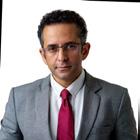
and creativity in a team. Similar to how competition between two companies can bring in better products and services, competition between employees can spur creativity and innovation. However, while feeling challenged can bring out better performance from employees, feeling threatened might work the other way. Only healthy competition can boost creative growth and boost productivity.
There are certain downsides to extreme competition. It might be discouraging, especially to new employees and team members, and lead to workplace conflicts, which will impact overall productivity in the long run. Competition might also create envy for winners, contempt for losers, and hostility and suspicion toward others. Extreme competition might also result in employees adopting unethical measures, like falsifying results, to achieve near-impossible results.
With competition among employees being a sensitive issue to maintain steady organizational growth, the leadership board should always remain vigilant and handle a competitive work environment with empathy. While
creating a cooperative workplace can be an intensive process, it is the only strategy that can lead to harmonious and productive space.
A balance between healthy competition and coordinated teamwork, and the commitment to meet the organizational goals can be the key mantra for the success of any organization. Team leaders must possess empathy and skills to make a group of employees work as a team. In order to maintain steady growth, every team requires empathetic leaders, who have the ability to understand the needs of his/her teammates and be aware of their feelings and thought processes. The primary objective of an efficient leader should be to ensure that even if there is competition among the teammates, it should be to unleash creativity and not unethical behavior or discouragement.
Would you like to comment?
Submit Your Articles HCM Excellence (APAC & Middle East) presented by HR.com November 2022 34 The Role Of Empathy And Coordination In Healthy Workplace Competition
Gaurav Bhagat is the Founder of Gaurav Bhagat Academy (GBA).
Providing Mentorship Programs To Women In Tech Should Be Every Organization’s Priority
Mentorship sessions also are beneficial for mentors
By Aliona Geckler, Acronis
More and more women are joining the tech industry every day. Companies, no longer comfortable with the status quo, begin to realize the great benefits of having a diverse workforce and start to provide equal opportunities to people from all walks of life. I love hearing stories about diversity changing company culture and even improving the bottom line. It shows us the workforce is evolving and women play an essential part in this process. I recently read a Deloitte article that predicted that by the end of 2022, the tech industry will reach an all-time high of 33% female representation.
This is a pivotal and exciting time for women in tech, a historically male-dominated industry. However, there are many remaining obstacles women face in the workforce. Luckily, with the proper resources and guidance, organizations can empower women with the skill sets needed to overcome challenges and lead successful careers. One such tool is mentorship
A mentor usually has a similar profession or background and can offer their wisdom and share their experience with the mentee to help conquer obstacles and make important career choices. The right mentor can be a door opener and a long-term point of reference to confide in during the journey.

Submit Your Articles HCM Excellence (APAC & Middle East) presented by HR.com November 2022 35
The impact of mentorship on career satisfaction is striking: 40% of women cite lack of mentorship as one of the biggest challenges in the tech industry, alongside a lack of female role models and opportunities for advancement.
As the Chief of Staff and SVP of Business Operations, I am proud to see first-hand the role mentorship plays in inspiring and educating women in the tech industry.
We have officially launched our own mentorship program, with already 50+ mentees involved across the world.
Our mentorship program is part of the #CyberWomen initiative, which is targeted to identify, educate, inspire, and coach the next generation of female leaders. We identified 50 high-potential women, selected through our performance review process, to be mentored by 40 of our senior leaders, executives, board members and advisors.
Mentoring meetings are happening monthly, and we started with internal training on what mentoring is about, the role of mentor and mentee, and how to start. It’s essential to agree on the goal of mentoring for each mentee, and we mainly focus on developing soft skills and support with career progression.
I, myself, currently have two mentees and I enjoy our sessions very much and am happy and satisfied when I can support my female colleagues. This support can be around understanding themselves better, planning their next career steps, achieving more in their current roles, navigating difficult situations, networking better internally and externally, or balancing professional goals and personal plans like marriage and children. Mentorship sessions also are beneficial for mentors. I am continuously learning from my mentees and using this knowledge in many aspects of my work.
There is also an evident demand for mentors—when the mentorship program was first announced, my inbox was immediately inundated with supportive women eager to join the program.
Leaders looking to implement mentorship opportunities for women can – and should – start by looking within their organization for potential mentors.
This is not to offset all mentor responsibilities on individual employees, but having female supervisors and executive women available to provide direction and help navigate the corporate world can go a long way. These one-on-one relationships are essential to help professionals develop the proper networking and interpersonal skills, including self-preservation, self-care, and improved confidence in the workplace.

To make it a successful mentorship program, the organization must ensure employees have the time and resources to be able to connect with these potential mentors on a consistent and private basis. These mentored employees can go on to become mentors themselves later on in their careers, helping strengthen the bond and sense of community in the workplace between women and those from various backgrounds. Studies have even shown that employees with mentors are promoted up to five times more often than their non-mentored peers, with mentors being promoted up to six times more than their peers.
With consistent mentoring, women from all backgrounds and walks of life can thrive in their careers and inspire a stronger, more confident future generation of women to join the technology sector which will benefit both the market and individuals in the long run. My personal experiences in this field have only inspired me to continue pushing for mentorship initiatives and spreading the word about the benefits of professional mentoring.
Submit Your Articles HCM Excellence (APAC & Middle East) presented by HR.com November 2022 36
Providing Mentorship Programs To Women In Tech Should Be Every Organization’s Priority
Aliona Geckler is the Chief of Staff and SVP of Business Operations at Acronis. Would you like to comment?
How To Address Gender Imbalance In The Workplace
Organizations can advance women’s professional journeys by taking positive action in the workplace
By Rashim Mogha, Skillsoft
Gender imbalance in the workplace has long been a part of business discourse. It has become more apparent with changing demographic patterns — women professionals who accounted for 51 percent of the global workforce in 1990 fell to 46.9 percent in 2020

The course of the pandemic has only exacerbated this situation by increasing women’s unpaid work. About 61.5% of mothers of children under age 12 say they took on the majority or entirety of the extra care work, as opposed to 22.4% of fathers. Sectors that account for a relatively large
share of female employees, like hospitality, retail, travel, education, and tourism, were hit hard with job losses, reducing women’s capital power in the global economy.
Referred to as the ‘pink pandemic’, this crisis has long-term impacted women’s wealth, leadership, and
Submit Your Articles HCM Excellence (APAC & Middle East) presented by HR.com November 2022 37
Top Pick
societal standing. According to the World Economic Forum’s Global Gender Gap Report, at our current trajectory, it will take almost 136 years to close the gender gap worldwide.
This calls for an industry-wide effort of organizations to champion strategies to elevate women’s accessibility to the world of work. Without direct action, more women will leave the workforce permanently, impacting progress toward gender equality in work over the long term and inhibiting economic growth.
So, what can organizations do to improve this situation?
Create Organizational Structures that Empower Women

Empowerment ensures the advancement of women in the workforce. Organizational leaders must check subliminal biases that creep into professional settings — traditional power structures are subconsciously stacked against women. Consciously making decisions that include women will help organizations walk the talk regarding gender equity.
Further, representation matters when it comes to empowerment. Placing more women in leadership positions will pave the way for women to feel empowered and aspire to achieve similar career advancement.
Enable Women to Advance Their Career
Women require support from their workplace throughout their
career, so that they can balance personal and professional development. Organizations can enable women to advance in their careers by investing in upskilling and reskilling women employees. Nurturing in-demand skills — especially new digital skills — are a game-changer for accessing career opportunities as more organizations embrace digital transformation. This means, looking beyond traditional training for new networks, expert insights, and micro-learning.
Additionally, designing flexible and supportive working environments is also important in helping women advance in their careers. Reviewing employee benefits and investing in wellness programs, maternity leave policies, flexible schedules, and childcare/career support are critical.
Provide “Seat and Voice at the Table” Opportunities
Gender imbalance in the workplace can, over time, lead to women feeling less engaged in their job roles. Unfortunately, this can be caused by seemingly small areas of imbalance.
Research conducted by the Bringham Young University and Princeton researchers found that, on average, women spoke only 25% of the time in professional meetings and conferences.
They are also more likely to be interrupted while speaking up during meetings. This leads to major decisions being made without their perspectives. Organizations must ensure that
women’s voices are being heard and they are equally invested in business decisions, to ensure that they remain engaged.
The ripple effect of the pink pandemic on women has wiped out years of women’s progress in terms of leadership development and financial security. As a result, organizations have a dual responsibility: an obligation to develop an immediate response to the “pink pandemic,” and a need to focus on long-term, sustainable solutions for hiring, promoting, and retaining women in the workplace, to positively impact the growth of the businesses and economy.
Rashim Mogha is the General Manager, L&B Portfolio, at Skillsoft.
Would you like to comment?
Submit Your Articles HCM Excellence (APAC & Middle East) presented by HR.com November 2022 38
How To Address Gender Imbalance In The Workplace
PoSH: How Safe Are Your Employees?
HR’s role in building a culture of inclusion
By Smita Shetty Kapoor, KelpHR
We hear a common refrain that the only thing constant is change. From the time of industrialization to corporatization to our remote working setups, the world of work has been undergoing a constant churn. So has the workforce.

Women entered the workforce during the wartime scarcity of
the 50s, and now with recent laws and societal shifts, we are finally looking to create spaces for persons across diverse identities, like gender, age, region, ability, and so on. Thus, the possibilities for different levels and layers of interaction increase. This increases the possibility of friction, misunderstanding, and politics. We must manage them effectively.
Earlier, this function was performed by a department called industrial relations, then morphed into human resources, and personnel management.
Today, we use terms like talent management, and sometimes people officers. Not only have workplaces and workforces changed, but also
Submit Your Articles HCM Excellence (APAC & Middle East) presented by HR.com November 2022 39
the management of issues of employees vis-a-vis each other and employer. Further, HR’s role in understanding and effectively addressing these concerns have also undergone a change.
When KelpHR started in 2013 and launched its flagship product, comprising PoSH (Prevention of Sexual Harassment) offerings, we used to receive questions like, “I did not even touch her, how are you calling this sexual harassment?” or “so, what now, will she complain if I shake hands?” The law has gone beyond the simplistic ideas of what can constitute sexual harassment.
Several times, courts have ruled that physical contact is not a must for an incident to be sexual harassment. Instead, harassment can be verbal or even visual in
nature. For close to a decade now, progressive employers, and law-abiding organizations have been carrying out awareness sessions, for better understanding and sensitization around the subject.
With more transgender folks entering the workforce, we must have mechanisms ensuring their privacy and safety. We must push back against the stigma surrounding sexual harassment of men. Only more awareness, sensitization, conversations and sharing will be able to meet the challenges of a more diverse world, where inclusion and equity are cornerstones of a good workplace.
PoSH will always stay relevant as it is critical to the welfare of
the workforce. HR is uniquely positioned to take the lead in driving the message, scheduling awareness sessions, initiating capacity-building programs and reinforcing a culture of speaking out for safety.
Here are some elements that should be regularly checked. Are employees feeling valued? Are they feeling recognized and rewarded? Do organizations have a work culture to promote? Do employees identify with that culture? And, the most important one, ‘Are employees feeling safe?’
The last question may seem like a simple, straightforward question. However, it can be answered in myriad ways. Safety does not just mean feeling physically protected. Safety also manifests in mental health concerns; safety

Submit Your Articles HCM Excellence (APAC & Middle East) presented by HR.com November 2022 40
PoSH:
How Safe Are Your Employees?
also includes the security to speak up without fear of facing adverse consequences.
Consistent messaging, signaling of a ‘zero tolerance approach’, and constant reaffirmation of values will help employees keep it on top of their minds.
Workplaces that have employees across all age groups face bigger challenges. While video is the medium of choice for Gen-Z, many people listen to podcasts while working out or during commuting. Podcast-based programs, where experts discuss PoSH-related critical topics can be shared with the employee base to listen and learn at leisure.
Micro videos of 1-2 minutes on specific topics, like consent, can be deployed at periodic intervals. The idea is also to keep developing programs that seek to center participant understanding and acceptance of the subject.
Do HR departments know they hold the power to trigger social change? We have heard from some HR folks that an applied theatre-based intervention for PoSH training was very successful. This has been received well by HR professionals, who recognize the complex and sensitive aspects of workplace sexual harassment and wish to empower and enable their workers to respond effectively to it.
Typical, and ‘not so typical’, situations between colleagues, or between colleague and client, etc. that can take place at work,
are played out. Participants are invited to share their perceptions, emotional responses, and logical responses to the role played in a debrief. This is another way HR can foster empathy and accountability in this regard.
Many say that HR is a thankless job. Sandwiched between employees and management, there may be a sense that no one understands the challenges of carrying out an HR job well. And so, no one can deny the value of an external validation. Something that tells us we are on the right path, helps us understand the industry benchmarks, and assess where we stand in the scheme of things.
Confidentiality is paramount in sexual harassment investigations, but the work done in the space of prevention, spreading awareness, and innovating redressal should be recognized and rewarded. HR folks would be enthused to know that such platforms exist, which acknowledge efforts made in this space, by organizations that go beyond mere legal obligations, into laying strong foundations of professional conduct and workplace culture.

The meaning and understanding of the word safety will continue to undergo iterations and will evolve to mean other things for generations to come. What we can hope to do, is convey clarity about what is expected of each other, of ourselves and from our employer.
Consent, boundaries, and pro fessionalism - are all terms that can be controversial, that can have varied meanings and takeaways depending on the target audience. As HR and external HR consultants, we need to hold space for conversations and discourse around the subject, we need to show others that it is okay to talk about certain difficult incidents, feelings, and equations at work.
HR departments can look at a long-term vision of enabling active bystanders and PoSH champions within the workforce so that PoSH is no longer a fraught term. After all, it is in everyone’s interest to have a safe space. It is everybody’s business when someone feels unsafe. HR can show the way, but caring, connecting, and showing concern, is up to each one of us.
you like to comment?
Submit Your Articles HCM Excellence (APAC & Middle East) presented by HR.com November 2022 41
Smita Shetty Kapoor is the CEO & Co-Founder of KelpHR. Would
How Safe Are Your Employees?
PoSH:
HRCI® & SHRM® CERTIFICATION PREP COURSES
GROUP RATES AVAILABLE
For HR Professionals
Show that management values the importance of the HR function, and has a commitment to development and improvement of HR staff.
Ensure that each person in your HR department has a standard and consistent understanding of policies, procedures, and regulations.
Place your HR team in a certification program as a rewarding team building achievement.
For Your Organization
Certified HR professionals help companies avoid risk by understanding compliance, laws, and regulations to properly manage your workforce.
HR Professionals lead employee engagement and development programs saving the company money through lower turnover and greater productivity and engagement.
A skilled HR professional can track important KPIs for the organization to make a major impact on strategic decisions and objectives, including: succession planning, staffing, and forecasting.
HR.com/prepcourse CALL TODAY TO FIND OUT MORE 1.877.472.6648 ext. 3 | sales@hr.com
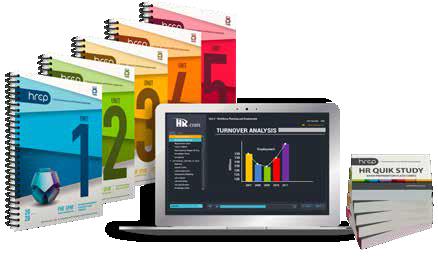
1 Less expensive than a masters or PhD program, and very
with 2. legislation and best practices 3. Recognized, Industry benchmark,
HR Professionals We offer
rates
For
All
CALL TODAY TO FIND OUT MORE 1.877.472.6648 ext. 3 | sales@hr.com | HR.com/prepcourse Group Rate Options 1 2 3
manageable to prepare
held by 500,000+
group
for teams of 5+ or more for our regularly scheduled PHR/SPHR/ SHRM or aPHR courses.
groups of 12+, we can design a more customized experience that meets your overall length of the course. Groups rates for HRCI exams are also available as an add-on.
group purchases come with 1 year of HR Prime membership for each attendee to gain the tools and updates needed to stay informed and compliant
How Employee Upskilling And Reskilling Can Benefit Your Organization
Helping employees reskill or upskill is the way forward for new-age organizations
By Sumit Sabharwal, Fujitsu
It doesn’t take a crystal ball to see that organizations are motivated for retaining their workforce and creating a comfortable environment where they can realize their ambitions and bring value to their businesses.
However, with external factors like digitization and competitors’ progress, businesses may find themselves unable to close skill gaps with their current workforce. In such a scenario, dismissing the current workforce and hiring new employees is not always a healthy option.
The ‘Future of Jobs’ report by the World Economic Forum says that due to technology and automation, over half of the workforce will need to be reskilled by 2025. This means that now is the right time for companies to embark on a revolution of upskilling employees, for the future of their work.
That is why organizations have started adopting upskilling practices that allow them to kill two birds with one stone. It helps them retain employees, develop professionally, and fulfill business goals at the same time.
Most companies invest in upskilling or reskilling when they want additional skills employed in daily tasks in a workflow. This allows employees to stay up-to-date with the latest trends and developments and perform jobs better. They also get a chance to fill skill gaps or even take on more senior roles within the company after their skill training. Reskilling means teaching existing employees a completely new set of skills so that they can perform a different job function within the same company.
There are several ways of upskilling and reskilling your employees. You should select a method depending on your organizational needs. Blending several methods of employee training and development works wonders in upskilling and reskilling.
Learning & development
This is the most popular and obvious way of reskilling or upskilling your employees after employing a detailed analytical process. The training manager must analyze the training objective and specifications and design the content after a thorough skill assessment.
Submit Your Articles HCM Excellence (APAC & Middle East) presented by HR.com November 2022 44
Top Pick
designation Rotation
Some organizations also use rotation as a method of upskilling and reskilling, where they place the employees in different departments for skill elevation and exchange of knowledge. Once the employees have been rotated, they are better equipped after undergoing upskilling.
Peer Training
Peer training involves more informal employee training, where a group of colleagues work together on a project, refining their skill sets. This helps solve problems in the workspace and prepares the employees for formal training.
Upskilling and reskilling come with many benefits, offering something positive to both employees and organizations. This makes it an essential part of employee training.
Improves Retention
No employee would want to work in a company that does not encourage his/her growth. Upskilling and reskilling ensure that the skillsets of your workforce will not become obsolete and show your employees that you care about their future.
Boosts Morale
Employees are happier in their roles and have a brighter outlook about their future in the company after upskilling or reskilling. Reskilling the workforce

helps employees see career advancement and gets them excited about work. Knowing what they are working towards gives them a deeper sense of purpose.
Increases Customer Satisfaction
Happy employees lead to happier customers. When workers believe in what they are working towards, they work better. Also, upskilling and reskilling keep the workforce up to date on industry trends, allowing them to offer the best insights to clients. Clients are willing to pay more to work with a knowledgeable, proactive team. When clients are happy, they become stronger brand advocates.
Attracts new Talent
According to SHRM’s skills gap research, 83 percent of HR professionals are plagued by difficulties, and of those, 75 percent say there is a shortage of skills among the candidates they see. Of course, when the business is successful, you may need to expand and upskill your workforce. As employees learn more, you have a wider pool of diverse talents when it is time to expand your team.
Builds Future Leaders
Every organization needs to create future leaders. Upskilling or reskilling of existing and new employees help in motivating them to take up more responsibili ties. Training motivates employees to perform better through skills development.
Submit Your Articles HCM Excellence (APAC & Middle East) presented by HR.com November 2022 45
Can Benefit Your Organization
How Employee Upskilling And Reskilling
Increases Love for Learning
The objective of employee training and development is to evoke a desire to learn more. It helps employees to discover their talents and sharpen their skills. A well-researched employment program creates a willingness to learn new skills.
Improves Productivity
Organizations invest in employee training, and upskilling or reskilling increases employees’ ability to face challenges. Higher productivity means better results and higher profit. Through upskilling, employees gain growth and the organization reaps profits.


Helps to Leverage Technologies
Employees should never be afraid of new technologies. Well-trained employees in new technologies make companies more powerful. It is essential to organize upskilling training sessions for each technological introduction.
Improves Soft Skills
Soft skills training for employees also leads to organizational growth. If a great worker does not know how to communicate with clients, the organization will not be able to properly leverage the skills of that employee.
If an organization wants its employees to truly benefit from its upskilling and reskilling training sessions, it needs to keep in mind the employees’ backgrounds and hire a trainer, who can engage employees. It is true that an engaged learner is a happy learner. Helping new and existing employees reskill or upskill is the way forward for new-age organizations in a fast-paced world.
Sumit Sabharwal is the Vice President – HR, of Fujitsu Global Delivery Centers, Fujitsu. In his current role, Sumit leads multi-country, multi-disciplinary teams in helping organizations succeed, heading a team of close to 250 HR professionals, and supporting close to 20,000 employees. Sumit is also the winner of “BW Businessworld 40u40 –best HR leaders to watch out for.”
Would you like to comment?
Submit Your Articles HCM Excellence (APAC & Middle East) presented by HR.com November 2022 46 How Employee Upskilling And Reskilling Can Benefit Your Organization
What Makes A Top Supply Chain Talent?
Three hard skills, three soft skills, and one fundamental skill
By Radu Palamariu, Alcott Global
There has been an increasing demand for exceptional supply chain executives in recent years. As the world becomes more interconnected, businesses are under pressure to optimize their resources to stay competitive. To meet this demand, there is a need for effective top talent who can help design, implement, and manage an efficient and effective supply chain. However, what makes a top supply chain talent?
As a result of my ongoing search for end-to-end supply chain executives, I have outlined seven of the most notable traits I have encountered in searching for top talent in the industry.
There are three hard skills, three soft skills, and one fundamental skill an executive supply chain candidate should possess to be successful in the industry.
3 Critical Hard Skills needed for an Executive Supply Chain Talent
1. data-Related Skills
For many businesses, data is the new oil. The most highly valued companies in the world tend to be driven by data. Elliptical skills help an organization understand and interpret data sets. It also enables them to see relationships between different data points. On the other hand, data skills involve knowing how to collect, store, and analyze data. Together, understanding data is essential for any executive who wants to be successful in the supply chain industry.
As data becomes increasingly important in our world, the demand for data scientists and analytics experts is also growing. A recent study by IBM found that the demand for these roles increases by 10 to 15% each year. While not everyone needs to be a data scientist or analytics expert, it is becoming increasingly important for everyone to have at least some data literacy. The skill will enable a supply chain executive to understand and make decisions based on data.
2. digital Project Implementation Skills
Top talents in the supply chain industry have different areas of expertise, and each focuses on a specific process or set of activities within the supply chain. However, all executives need to understand and utilize digital tools and technologies to be effective in their roles.
It requires an understanding of how digital technologies work to improve supply chain processes and the ability to identify and implement appropriate digital projects across different areas of the supply chain.
As such, executives with strong digital implementation skills can drive transformative change within their organizations and create significant competitive advantages. However, an executive does not need to be a data scientist, however, a direct experience in digital project implementation will go a long way.
Submit Your Articles HCM Excellence (APAC & Middle East) presented by HR.com November 2022 47
3. A - International Exposure
International exposure is an important quality for any top talent in the supply chain field. As the world becomes increasingly interconnected, supply chain professionals need to have experience working across different geographies and cultures.
It will give them the skills and knowledge necessary to navigate the complexities of the global marketplace. Additionally, working on multiple continents provides a unique perspective that can be invaluable to their companies.
4. B - End-to-end Experience
It is essential to have exposure to the different functions of the supply chain to be considered at the executive level in the industry. This exposure allows for a greater understanding of how the various components of the supply chain work together. By having this end-to-end view of the supply chain, an experienced executive can make decisions based on experience that would benefit the entire organization.
3 Soft Skills an Effective Supply Chain Executive Must Possess
While hard skills are undoubtedly important for any position, soft skills set candidates apart. In a role,
such as that of a supply chain officer, where accuracy and attention to detail are crucial, soft skills will ultimately determine their success in the role.

1. Presentation and Communication Skills
Presentation and communication skills are critical, especially for professionals and executives within the supply chain industry. The ability to catch an audience’s attention within 30 seconds is an excellent indication of good presentation and communication skills. Radical simplicity is a great way to communicate ideas in a simple way. When sharing your ideas, it is important to be clear and concise.
Good communication skills are essential for transmitting a message across an organization and supply chains are large organizations. They also play an essential role, now that the supply chain function has a seat at the business table, in all major organizations.
2. Influencing Engagement Skills
In the supply chain, influence and engagement abilities are becoming a requirement. A crystal-clear vision and the ability to communicate it to others increase the likelihood of gaining other people’s support and investment. It is necessary to demonstrate how a project will benefit the firm
Submit Your Articles HCM Excellence (APAC & Middle East) presented by HR.com November 2022 48
What Makes A Top Supply Chain Talent?
and other businesses as a whole. It is possible to accomplish this goal by providing evidence that demonstrates how the project will result in increased productivity, communication, and transparency throughout the supply chain.
3. Change Management Skills
The ability to manage change is an indispensable skill for any top supply chain professional, in an industry that has been constantly disrupted in the past few years. Change implementation success is dependent on the capacity to successfully articulate the need for change, acquire buy-in from key stakeholders, and build and execute a strategy that fits the needs of the organization.
Change management skills are required for people in charge of leading change projects as well as anyone who wishes to be an effective change advocate within their organization. Disruptions call for changes and with the right change management skills, top supply chain talent can drive significant improvements in organizational performance.
Fundamental Skill
As a supply chain executive, having the mindset that learning never stops, and continuously making time for learning, is fundamental. In today’s rapidly changing business landscape, it is more important than ever to learn and relearn to stay ahead of the curve constantly. Additionally, learning opportunities might be even more accessible, as a mentee.
Being surrounded by experienced and smart mentors helps to develop new skills and promote professional growth. By admitting that we will never know it all, we open ourselves up to limitless possibilities for growth and development.
As we innovate, I do believe that the technical skills may change here and there, but the soft skills and the fundamentals to “keep learning” will be here to stay for the next 20 to 25 years and onward.
Conclusion
So, what makes a top supply chain talent? The answer is not simple. It takes someone who can see the

big picture, understand complex systems, and have the technical skills to make it all work seamlessly. However, that is just part of the equation – they also need to be able to lead and motivate teams, communicate effectively across functions, and be open to change.
The supply chain industry is a complex and ever-changing field. It takes a particular type of talent to be successful in this industry, someone with the skills to adapt and thrive in such a dynamic environment. If you want to possess the skills of a top supply chain talent, start by studying the principles I’ve outlined. Attend trade shows, read industry journals, and network with other professionals in the field. Most importantly, keep learning and stay ahead of the curve.
Do you agree that these are essential qualities for success in this field?
Recommended Resources: https://www.alcottglobal.com/
Radu Palamariu is the Managing Director, of Asia Pacific and Europe, at Alcott Global and the Global Head of Supply Chain & Logistics Practice. He has been working on C-level and top management executive search assignments with Top Fortune 500 companies and local European and Asian conglomerates, particularly for manufacturing, logistics, transportation, supply chain management, and e-commerce. He has been named one of the Top 3 Global Supply Chain Influencers on LinkedIn and is co-author of the new book, From Source to Sold: Stories of Leadership in Supply Chain (October 4, 2022).
Would you like to comment?
Submit Your Articles HCM Excellence (APAC & Middle East) presented by HR.com November 2022 49
Makes A Top Supply Chain Talent?
What
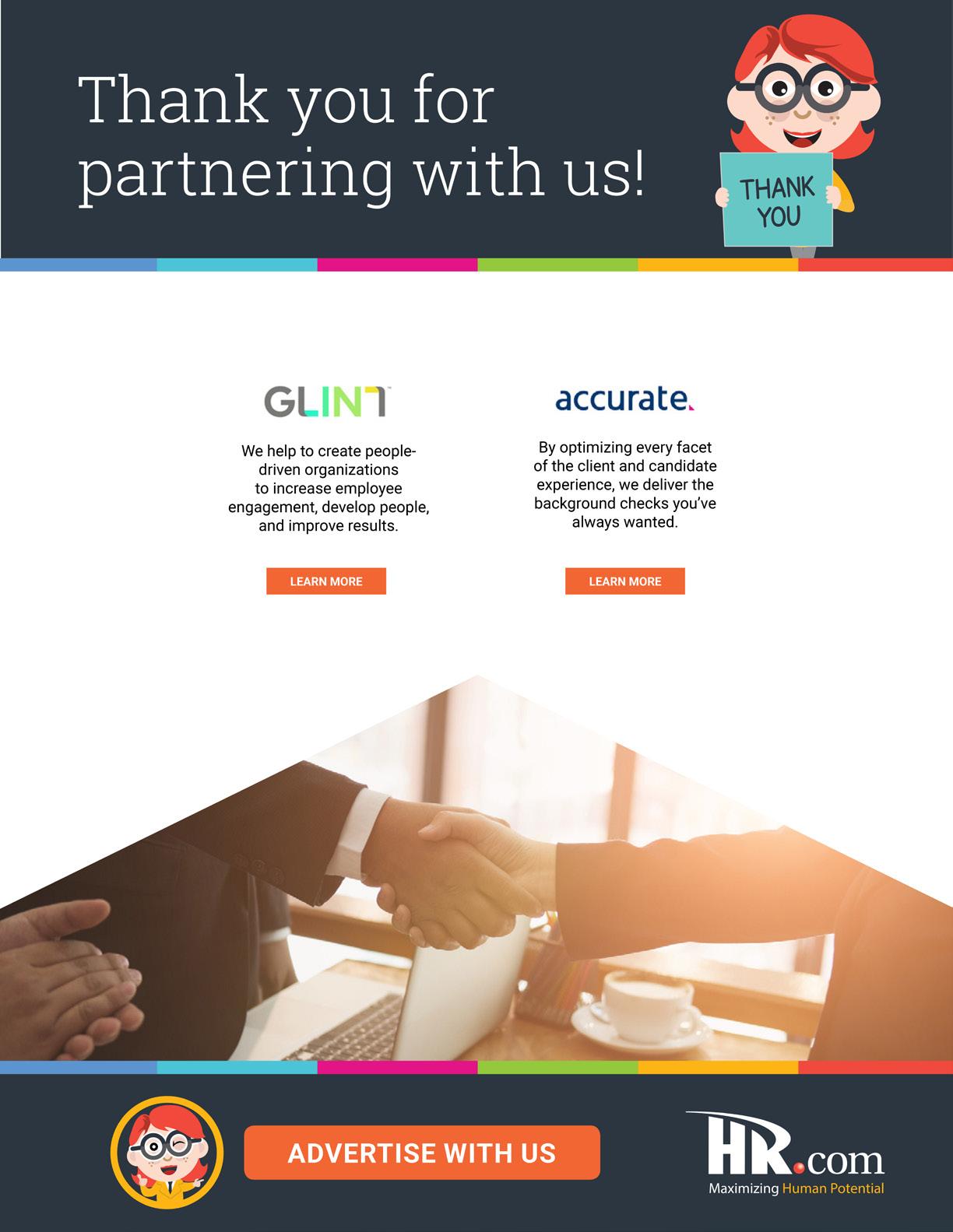
PARTNER WITH US
The Future of Recruitment Technologies 2022
2022 REGISTER People Strategy for the #FutureOfWork
2023 REGISTER The State of Contingent Work
2023 REGISTER How to get more from your tech stack ahead of a recession
2022
PM - 3:30 PM ET REGISTER Behind the Screen: How to Compliantly Hire Someone
2022
PM - 1:00 PM ET REGISTER VIRTUAL EVEnTS & HR.COM WEBCASTS UPCOMInG www.hr.com/upcoming_webcasts www.hr.com/virtualconferences View our Upcoming Webcasts Schedule and Register Today!
Leveraging Technology to Remove Bias & Diversify Your Pipeline
7, 2022 12:00 PM - 1:00 PM ET REGISTER The Evolution of Employee Recognition2023 Trends
2022 11:00 AM - 12:00 PM ET REGISTER How HR Uses AI-Powered Texting for Recruiting and More
2022
PM - 2:00 PM ET REGISTER
EVE n TS View our Upcoming Virtual Conference Schedule and Register Today!
December 7-8,
January 19,
January 18,
December 5,
2:30
December 1,
12:00
WEBCASTS
December
December 6,
December 8,
1:00
WEBCASTS VIRTUAL
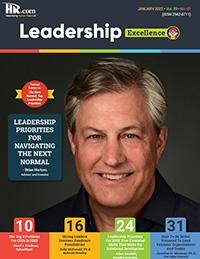
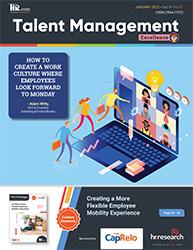
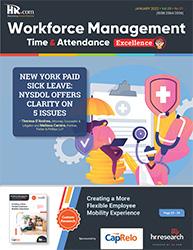
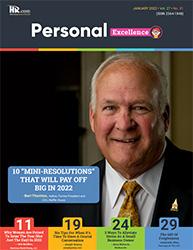
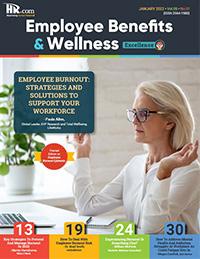
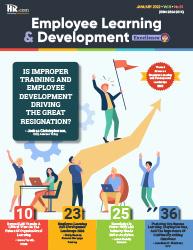

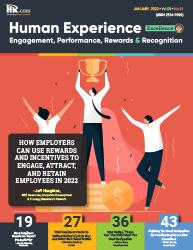
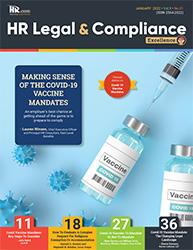
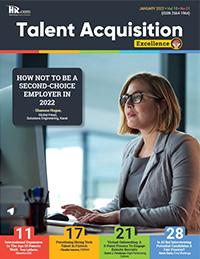
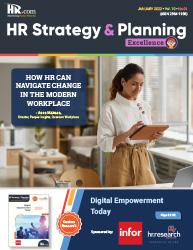
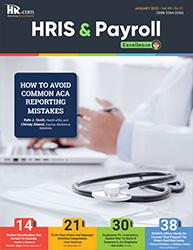
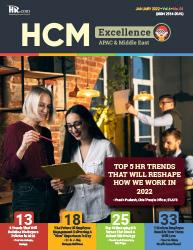
Like to submit an article? Use our online submission form or for more information go to www.hr.com/ExcellencePublications Publications 13 Targeted Publications to Reach Your Audience Informing, Educating, Enlightening and Assisting HR professionals in their personal and professional development, the Excellence series offers high-quality content through the publications!
















































 Jay Tarimala, TA - Sourcing Manager, Emmes
Jay Tarimala, TA - Sourcing Manager, Emmes





 Mike Cohen, Founder/Sourcer,
Mike Cohen, Founder/Sourcer,




































